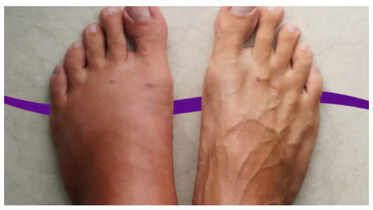ARTICLES
How to Register with an HMO in Nigeria
How to Register with an HMO in Nigeria

Getting started with health insurance can feel like learning a new language, especially when it involves registering with a Health Maintenance Organization (HMO) in Nigeria. You might have heard people mention NHIS, private HMOs, capitation, referrals—and you’re wondering how it all fits together. If you’re looking to register with an HMO in Nigeria, either for personal health coverage, family plans, or employer-based options, knowing what to expect can help you avoid confusion, delays, and money-wasting mistakes.
Whether you’re switching from paying out-of-pocket or trying to register for the first time, this article will walk you through the process. We’ll explain what’s required, what to look out for, and what happens after your registration is complete—without getting lost in technical jargon.
What Does It Mean to Register with an HMO?
When you register with an HMO in Nigeria, you’re selecting an organization that will coordinate your healthcare services under a health insurance plan. The HMO acts as a middleman between you and healthcare providers. Once registered, they’ll be responsible for paying your medical bills as agreed in your plan while also managing which hospitals and clinics you can access. But before you start receiving care, you need to properly enroll and ensure your details are captured, verified, and accepted by both the HMO and your chosen hospital.
Who Can Register?
Anyone living in Nigeria can register with an HMO. This includes:
- Individuals seeking private health insurance
- Employers looking to register their staff
- Government workers under the NHIS
- Students under campus plans
- Retirees and the elderly
- Families seeking joint coverage
You don’t need to work for the government to register, and you also don’t need to be employed by a corporate body. There are flexible options for informal sector workers, artisans, market traders, and even students.
Steps to Register with an HMO in Nigeria
Step 1: Choose the HMO You Want to Register With
There are over 60 NHIS-accredited HMOs in Nigeria, each offering various plans based on income level, hospital access, and benefits. Some of the most recognized include Hygeia, Avon HMO, Reliance HMO, AIICO Multishield, and Total Health Trust. Before settling for one, compare plans and pricing. Some HMOs have better customer service, wider hospital networks, and more reliable claim processing. You can call their customer support lines or visit their websites to compare.
Step 2: Select a Health Insurance Plan
HMOs usually offer plans in different tiers—basic, standard, premium, and customized packages. Your plan determines what type of care you’ll get, how often, and from which facilities. For example, a basic plan may only cover general outpatient visits, while a premium plan might include surgeries, maternity, optical, and dental care. Always read the fine print. Look out for exclusions like chronic illness coverage, cancer treatment, and dialysis. If you have special needs like fertility treatment, mental health care, or child immunization, check if these are included in the plan you want.
Step 3: Get a Registration Form
Most HMOs now allow online registration. You can fill out a form on their website or download a printable PDF. For traditional paper-based registration, you can walk into their office or an affiliated hospital to collect a form. You’ll be required to provide:
- Full name and contact information
- Date of birth and gender
- Residential address
- National Identification Number (NIN)
- Passport photograph
- Choice of hospital or clinic (usually from a list)
- Selected plan option
- Employment details (if under a group plan)
For family plans, you’ll also provide the names, ages, and passport photos of your dependents.
Step 4: Submit the Form and Required Documents
After filling out the form, you’ll need to submit it with the required documents either online or in person. Some HMOs request additional documents such as a valid ID card (NIN slip, voter’s card, or driver’s license), proof of payment (if you’re paying out-of-pocket), and a passport photograph. If you’re enrolling under an employer or corporate plan, your HR department may handle this part for you.
Step 5: Make Payment (If Required)
For private enrollees, your plan becomes active only after payment. Payments can be monthly, quarterly, or annually, depending on your chosen plan. Some HMOs offer discounts for annual payments or large group enrollments. Once payment is confirmed, you’ll receive a policy number or ID which you’ll use when visiting hospitals.
Step 6: Wait for Activation and HMO Card
After submission and payment, it can take between 5 to 15 working days for your registration to be processed. Once confirmed, your HMO will send you an ID card (physical or digital), which you’ll use at the hospital. Some HMOs now provide e-cards you can store on your phone. Ensure you get confirmation that your hospital of choice is assigned and active. If not, you may experience issues when seeking care.
Things to Watch Out For
- Hospital Coverage: Not all hospitals accept every HMO. Even if it’s on their list, ask if they still have slots available or have been delisted.
- Delays in Activation: If you urgently need care, it’s best to ask how long processing will take before choosing a plan.
- Hidden Charges: Some HMOs may advertise free maternity or eye care but still require you to co-pay or buy medication.
- Network Limits: You may only be allowed to access care within your state, or at a specific set of hospitals. Know these limits before choosing.
- Capitation Issues: Ask how frequently the HMO pays hospitals. If capitation delays happen, hospitals may turn you away even when you’re insured.
How Long Does Coverage Last?
Your health insurance typically remains valid for the period you paid for—monthly, quarterly, or yearly. HMOs send reminders when your plan is about to expire. If you’re under a corporate plan, your employer handles renewals. But it’s important to regularly confirm your policy is active to avoid being denied service.
What Happens After You Register?
Once you’re successfully registered and activated, you can walk into your selected hospital for covered services. You’ll need to present your HMO card and possibly fill a small form at the hospital’s HMO desk. After verification, you’ll be attended to by the medical team. In some cases, your care might need approval from the HMO before proceeding—especially for surgeries, diagnostic tests, or specialist referrals. Always keep your HMO’s customer care line handy for such situations.
ALSO READ: Affordable Private Health Insurance Options in Nigeria
Discover more from 9jaPolyTv
Subscribe to get the latest posts sent to your email.

 ARTICLES19 hours ago
ARTICLES19 hours agoTop 10 5G Smartphones in Nigeria Under ₦200,000 (2025 Edition)

 EDUCATION19 hours ago
EDUCATION19 hours agoNELFUND disburses ₦86.3bn student loans to 450,000 beneficiaries

 EDUCATION19 hours ago
EDUCATION19 hours agoOPay boosts education with ₦1.2bn scholarship for OOU students

 Admission20 hours ago
Admission20 hours agoFederal Polytechnic Ado-Ekiti Releases 2025/2026 ND Cut-Off Marks — Check Your Course Here

 EDUCATION19 hours ago
EDUCATION19 hours agoNELFUND says students’ loan repayable, receives 760,000 applications

 EDUCATION20 hours ago
EDUCATION20 hours agoSwiss Government Excellence Scholarships 2026–27 — Apply Now

 POLYTECHNIC NEWS3 hours ago
POLYTECHNIC NEWS3 hours agoVIDEO: Bauchi Police Arrest 3 in Polytechnic Hostel Robbery, Dozens Detained After Student Protest

 ARTICLES19 hours ago
ARTICLES19 hours ago5 Cheapest itel Phones You Can Buy Right Now
































